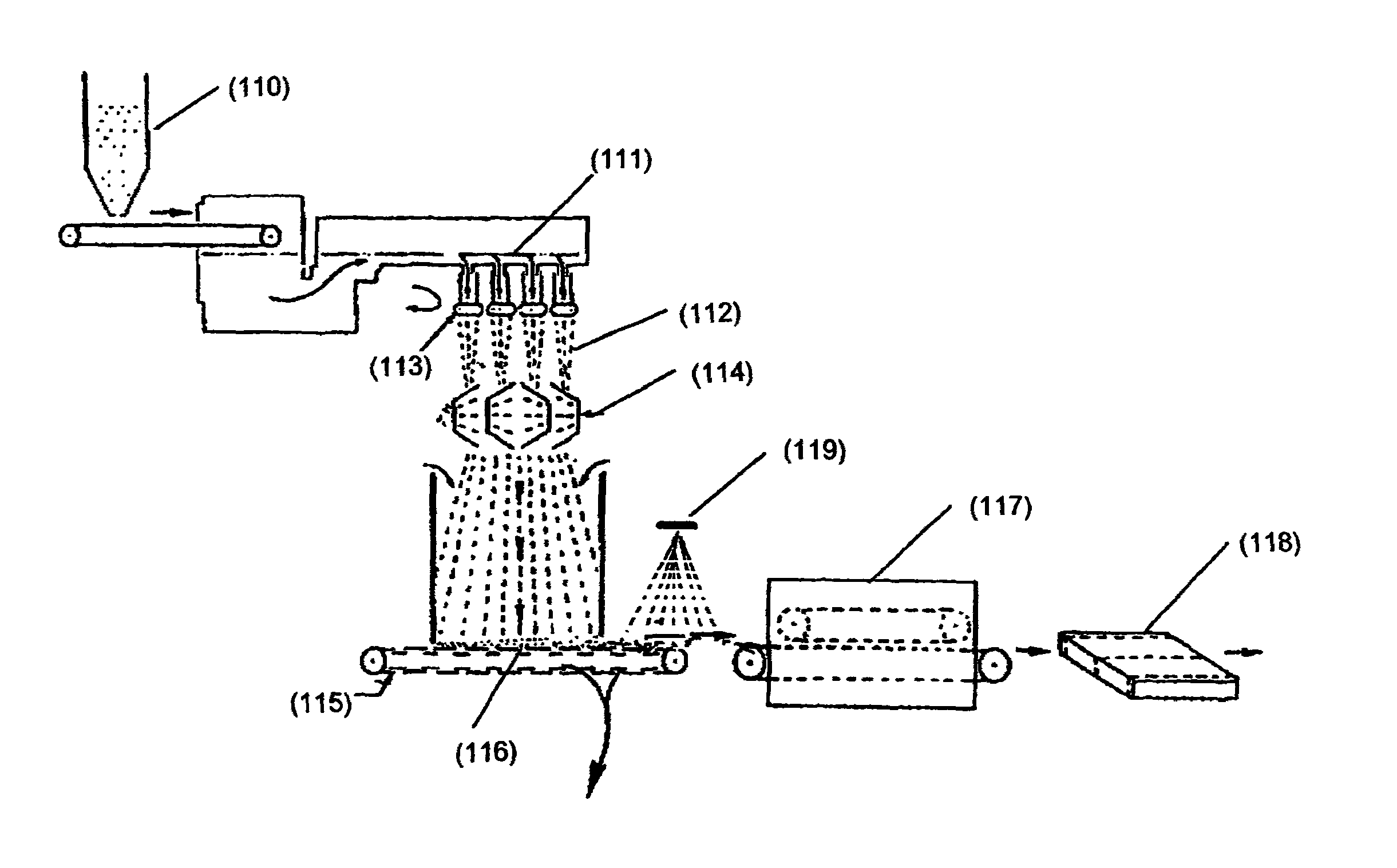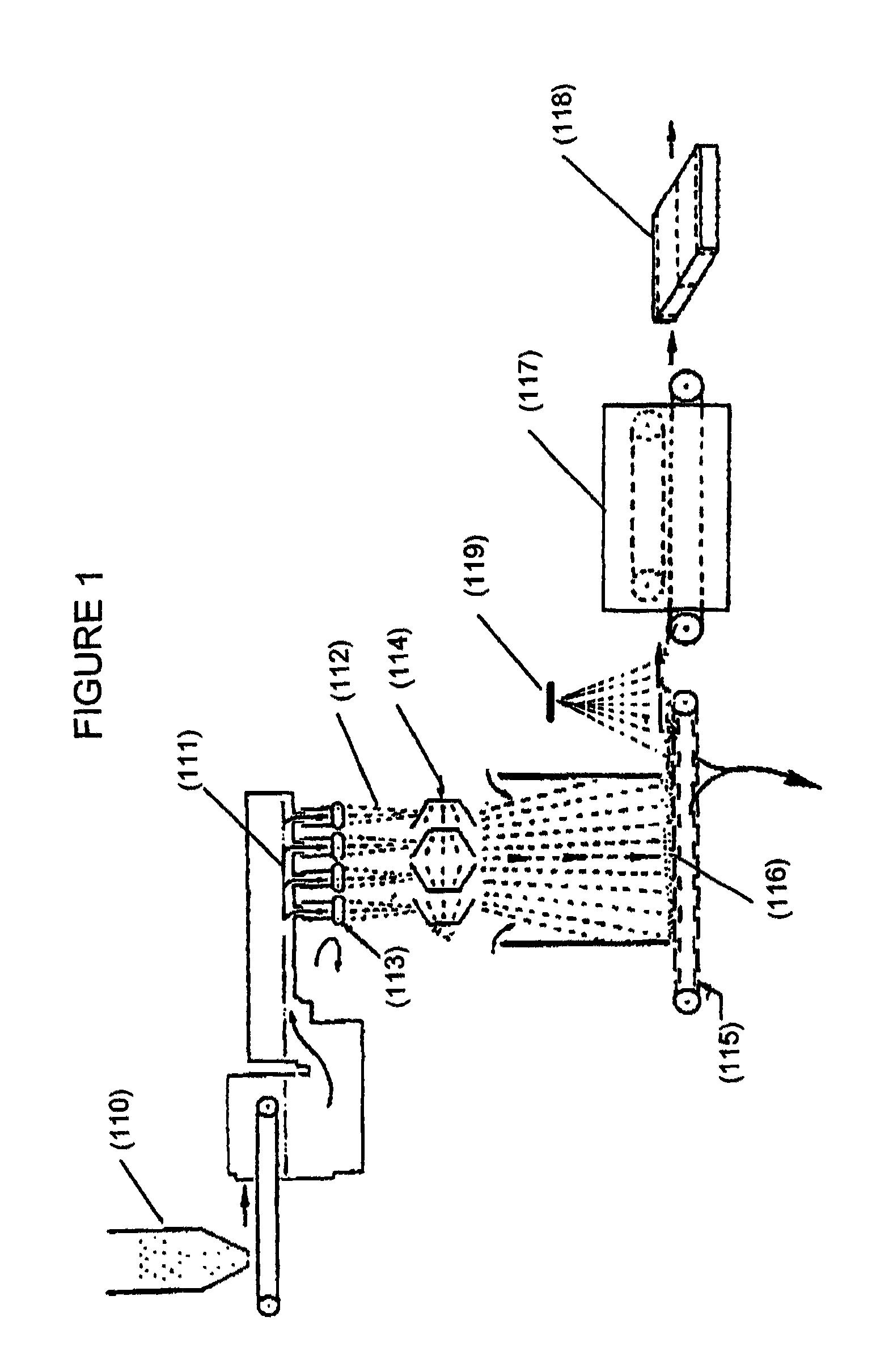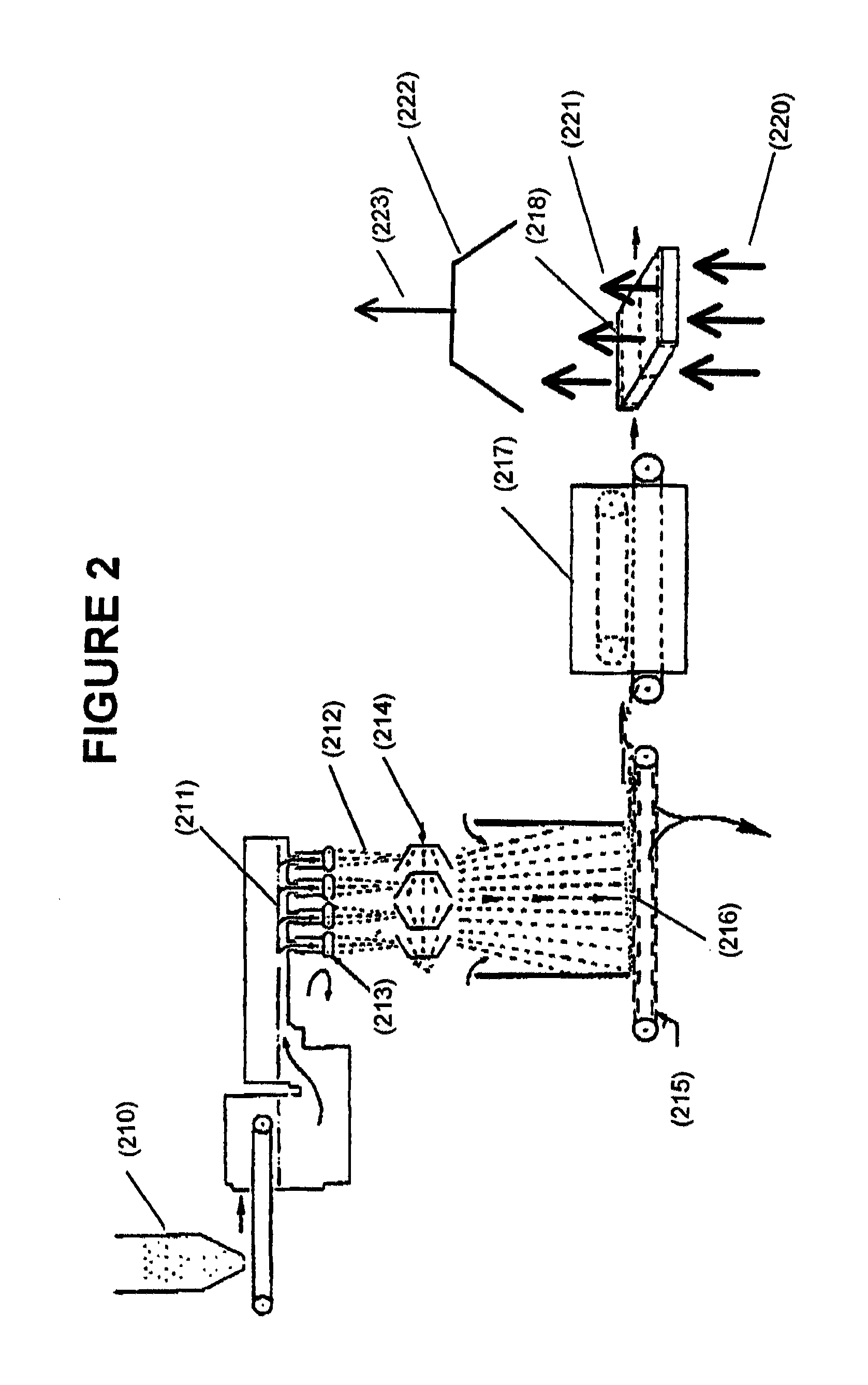Porous fiberglass materials having reduced formaldehyde emissions
a porous fiberglass and formaldehyde technology, applied in the field of formaldehyde scavenger treatment, can solve the problems of reducing formaldehyde emissions, reducing thermal insulation and sound attenuation properties of products, and reducing formaldehyde emissions, so as to reduce formaldehyde emissions, reduce the tensile properties of cured products, and reduce formaldehyde emissions
- Summary
- Abstract
- Description
- Claims
- Application Information
AI Technical Summary
Benefits of technology
Problems solved by technology
Method used
Image
Examples
example 2
Review of Handsheet Strength as a Function of Formaldehyde Scavenger Addition
[0151]A test was conducted to compare handsheet tensile strength of a standard phenol-formaldehyde resin / binder system to one that has been modified by adding salts such as sodium bisulfite. This Example demonstrates the loss of mechanical properties resulting from mixing a formaldehyde scavenger into the uncured binder as set forth in the '371 patent.
[0152]A series of binders was evaluated for handsheet tensile strength. Handsheets were made as follows. Premixes were prepared by mixing resin GP2894 and a 40% urea solution. The premix solutions were allowed to prereact overnight at room temperature. The binders were prepared by weighing the binder ingredients into a ½ gallon jar and mixing well. The modified binders were formulated to contain sodium bisulfite in an amount of 50% by weight percent of binder solids. Bisulfite solids were calculated as a percent of binder solids which are defined as phenolic s...
example 3
Blowing Wool with Solid Formaldehyde Scavenger Addition
[0160]This Example illustrates the results of the addition of a formaldehyde scavenger according to the present invention to a product having a formaldehyde-emitting binder thereon, where the binder is substantially cured. In this case, a commercially available blowing wool product (Owens Corning Advanced ThermaCube Plus® blowing wool (loose fill fiberglass) was encased in a substantially air-tight container or package with a formaldehyde scavenger composition.
[0161]A Control was prepared by closely placing 135 grams of the Advanced ThermaCube Plus® (hereinafter ATC+) blowing wool into a one liter Nalgene® bottle. The bottle then was sealed by closing the lid tightly.
[0162]To prepare a treated sample, 135 grams of the ATC+ blowing wool also was stuffed into a one liter Nalgene® bottle with 0.81 grams sodium bisulfite scavenger. The insulation was divided into 5 equal parts. One part (⅕ of the material) was placed into the Nalgen...
example 4
Examination of Formaldehyde Scavenger-Scavenger Paper on Formaldehyde Emissions from Insulation
[0166]The effectiveness of sodium bisulfite treated paper to reduce formaldehyde emissions from commercially available R-13 fiberglass insulation was examined.
[0167]A fresh bag of Knauf R-13 unfaced insulation was obtained directly from Knauf Fiberglass. The insulation was cut into 8″×20″ pieces upon receipt. The pieces were put immediately into zipper bags.
[0168]Formaldehyde emissions were measured for the following samples. Blotter paper samples were treated with solutions of sodium bisulfite as shown in the Table below. The treated samples were then dried in an oven the as shown in the Table below.
[0169]
GramsBlotter PaperTreatmentDryingBlotter PaperSampleTreatmentChemicalConditionsObservationsControl:None0NoneDryAqueous Sodium BisulfiteAqueous 33.3%21.201 minute atDampTreatmentSodium Bisulfite70 C.SolutionAqueous Sodium BisulfiteAqueous 33.3%20.001 minute atDampTreatmentSodium Bisulfite...
PUM
| Property | Measurement | Unit |
|---|---|---|
| density | aaaaa | aaaaa |
| aspect ratio | aaaaa | aaaaa |
| aspect ratio | aaaaa | aaaaa |
Abstract
Description
Claims
Application Information
 Login to View More
Login to View More - R&D
- Intellectual Property
- Life Sciences
- Materials
- Tech Scout
- Unparalleled Data Quality
- Higher Quality Content
- 60% Fewer Hallucinations
Browse by: Latest US Patents, China's latest patents, Technical Efficacy Thesaurus, Application Domain, Technology Topic, Popular Technical Reports.
© 2025 PatSnap. All rights reserved.Legal|Privacy policy|Modern Slavery Act Transparency Statement|Sitemap|About US| Contact US: help@patsnap.com



